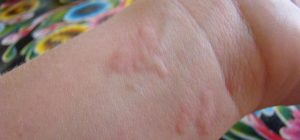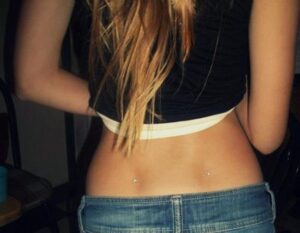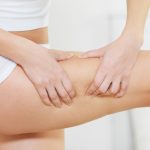What are hives?
 Hives also known as urticaria, is a condition in which wheals are developed on the skin. It has red, itchy and smooth scared which are elevated and are embossed. The size of these rash like disease varies from few millimeters to many millimeters. They can appear anywhere on the body without any solid reasoning.
Hives also known as urticaria, is a condition in which wheals are developed on the skin. It has red, itchy and smooth scared which are elevated and are embossed. The size of these rash like disease varies from few millimeters to many millimeters. They can appear anywhere on the body without any solid reasoning.
Hives are common and can be annoying but it fades away on its own until and unless it is accompanied by any other serious medical condition or disease. These rashes may occur with some symptoms and signs which can be treated by the help of medications and home remedies. Here, in this article you will get to read all about hives; how they are formed, who gets it and other things like: how to get rid of hives, symptoms and signs, etc.
Who Gets Hives?
Hives is a common medical condition which is estimated to have every sixth person as its prey. Research and studies shows that hives happen to occur in children and women between the age bracket of 30 and 60. Those who have medical history of allergies are more prone to this condition.
Although there are those types of hives which stays in for long term and are said to be less common. Scientific and medical studies also shows that women are twice prone to develop chronic hives as compared to men.
What Are The Types Of Hives?
Various types of hives or urticaria revolve around rashes and their nature, physical inducement and sizes. The major types of hives are as follows:
- Dermatographia:
- Cholinergic urticaria:
- Cold urticaria:
- Delayed pressure Hives:
- Solar urticaria:
- Water contact (aquagenic) urticaria
1. Dermatographia:
Dermatographism (also called dermatographia and dermographism) means the skin writing. Individuals with this type develop the rash on areas of skin that have been firmly stroked. The affected skin is commonly very itchy, but some mild does not lead to itching. Although any portion of your skin can become affected, but the palms, genital skin, soles of feet and the scalp are less likely to get affected. It is more likely to happen when you’re hot. For example, you may develop it more easily as you rub your body with the towel after the hot shower. The rash lasts less than one hour.
2. Cholinergic urticaria:
Cholinergic urticaria (hives) is very common. It is caused due sweating & is sometimes known as heat bumps. Urticarial rash is very easily distinguishable scars are quite small with 2-3 millimeters in diameter with the red flare circled around them one. The rashes shows up after a few minutes of sweat and tend to get worse on the back, chest and arms. The rashes last for 30 minutes to one hour or even more before they fade away.
Some people get slightly wheezy & feel breath shortness during the rash. These happen after exercise or any physical exertion and are gone before the doctor can check them. This type of hives occurs most commonly in young people.
3.Cold urticaria:
Cold urticaria/hives is relatively an uncommon condition. A rash develops when skin is exposed to the cold, including cold winds, cold water and rain. The cold may trigger the rash, or re-warming of skin after recovering from cold. The rash causes some effects on the cold parts of skin. If a larger area of the skin is chilled, this rash can become very extensive. For instance, swimming in the cold water can cause a severe and widespread rash on most portion of your body which may make you feel dizzy and faint.
4. Delayed pressure Hives:
Delayed pressure hives is also uncommon. It may develop alone but commonly affects those who have suffered chronic urticaria/hives. In this kind of urticaria rash appears 4 to 6 hours after the affected skin experiences prolonged deep pressure. For instance, after putting on a tight seat belt, or a tight wrist watch strap, or after gripping up a tool like a screw driver for long duration. This rash can cause pain and may last for several hours.
5. Solar urticaria:
This is a rare condition. In this case a rash appears on the skin which exposed to the sunlight.
6. Water contact (aquagenic) urticaria
In this condition a rash develops on the skin that is exposed to the water having any temperature.
What Causes Hives?
Hives which are produced because of any allergic reaction comes with following causes:
- Connect with animal skin, meat or live animal.
- Pollen
- Shots and vaccines given against allergies.
- Touch and smell of things which you are allergic to.
- Some medicines gives rashes (psychiatric medicines have high side effects attached to them).
- Insects’ stings and bites.
- Citrus fruits.
- Dairy products: milk, cheese and butter.
- Peanuts, walnuts and tree nuts.
- Shellfish.
Symptoms Of Hives:
Symptoms of a common hive condition are:
- Raised, embossed and elevated skin.
- Rashes which are mostly red in color.
- Itchiness, irritation and feel of burning on rashes.
- Weal on skin.
- Size ranges from few millimeters to many millimeters.
- Chronic hives do not work or settle on their own.
- Common hives fade away in a day or two.
- Rashes can appear anywhere on the skin.
- They appear on only one portion of body or all across a large part of it.
There are also those types of hives which do not follow in the category of allergic ones. Their symptoms are different. Some of those are:
- Itchiness and scratches on the skin.
- Exercise.
- Stress.
- Any thyroid related disease.
- Too much exposure to sun.
- Heat, water and cold exposures.
- Chemicals’ contact.
- Pressure on the skin by sitting for too long, etc.
Home Remedies Of Hives:
Natural and home remedies are worthy to be experimented not only because they have been tested and studied by many nutritionists but also of the fact that they are simple and easy. Some of the natural ways to deal with hives are through basic food items like oatmeal, fish liver oil and baking soda.
1. Oatmeal:
Take colloidal oatmeal which is almost same as any other oatmeal. The only difference is in the dissolving and diluting time. It has faster mechanism to solve in any soluble. This gives perfect room to deal with hives because it has soothing effect and leaves you itch-free. You should do following to get rid of hives easily:
- Take 3 tablespoons of colloidal oatmeal and mix it well in the tub full of water.
- Soak yourself in it for about half an hour.
- Make sure that the water is not hot or cold but warm enough to give you comfort.
- Wash yourself with clean water.
- Pat dry.
- Repeat the process thrice in a week. You can increase the frequency according to the situation of hives.
2. Baking soda:
Baking soda has a soothing agent which helps in reducing itchiness. This is what you have to do:
- Take 3 table spoons of baking soda. Make its solution by adding less than a quarter cup of clean water in it.
- Wash effected area of skin with clean water.
- Dry it.
- Apply the solution of baking soda on the areas effected with hives.
- Leave it there for at least 5 minutes.
- Wash it with clean water and pat dry it.
- Repeat once in a day and once at night.
3. Fish liver oil:
Fish liver oil contains omega 3 fatty acids which works against hives. You have to simply buy the capsules and have them with simple distilled water or do the following:
- Break the capsule of fish liver oil.
- Wash your effected skin and pat dry it.
- Apply oil from the capsule on the affected area.
- Let it be there and don’t rinse it off.
4. Apple cider vinegar:
In some cases especially with chronic hives you will see that the baking soda isn’t helping much. For that you need to:
- Take a tablespoon of baking soda and 1 teaspoon of apple cider vinegar. Mix them together.
- Add less than a quarter of water and make a good thick solution.
- Apply it on the affected area generously.
- Wash it and dry it with non-allergic cloth.
5. Tea:
Any sort of tea, either it is green or black will make the hives vanish. You need to have it the way you like. Add sugar or have it without sugar, that’s your choice.
Hives Treatments:
The aim of the treatment of majority cases of common urticaria (hives) is to lessen the symptoms as this condition disappears itself. The most common oral treatments used are antihistamines, that help compete with the the histamine fluid leaked by the mast cells. The major side effect of the antihistamines is that it causes drowsiness.
1. Antihistamines:
Most antihistamines are available in stores without any prescription, like diphenhydramine (Benadryl), which is taken in the doses of 25 mg, and the chlorpheniramine (ChlorTrimeton) that is taken in doses of 4 mgs. These drugs can be used up to 3 times daily, but as both of them cause drowsiness, it is recommended to take them at bedtime. People who take these medications should be very careful and must be sure that they are totally alert before going to drive or participating in any such activities which require mental concentration.
Loratadine (Claritin, 10 mg) & fexofenadine (Allegra) are the antihistamines which are normally available at the counters. They are not likely to provoke drowsiness. Another over-the-counter available medicine is hydroxyzine (Vistaril, Atarax), that gives rise to drowsiness, and its broken down compound, cetirizine (Zyrtec, 10 mgs) is known to be slightly sedating.
Antihistamines which need a prescription are cyproheptadine (Periactin) that causes drowsiness. Another prescription antihistamine which causes a bit of sedation is called levocetirizine (Xyzal). Physicians sometimes combine them with some other type of antihistamines known as H2 blockers, like cimetidine (Tagamet) and ranitidine (Zantac). This list of antihistamine is not an exhaustive one. Physicians customize the treatment plans specific to patients and change them according to clinical response.
2. Steroids:
Oral steroids such as prednisone, (Medrol) could help the severe conditions of hives in short term, but the usefulness of oral steroids is restricted by this fact that most instances of hives don’t last that long for steroid to be used in continuity safely.
3. Antibiotics and Phototherapy:
Other medical treatments have also been used to treat hives, such as montelukast (Singulair), antifungal antibiotics, immune system suppressing agents, ultraviolet radiation and tricyclic antidepressants (amitriptyline [ Endep, Elavil], nortriptyline [Aventyl, Pamelor], doxepin [Adapin ,Sinequan]). Evidence supporting the benefits of these treatments is sparse. In normal cases, they are required rarely.
4. Topical Therapy:
Topical therapies used for the treatment of urticaria are also available but they’re generally ineffective. They include lotions and creams which numb the nerve endings & decrease itching. Some ingredients that can achieve this are diphenhydramine, menthol, camphor, and pramoxine. Many of above topical medicines needs no prescription. Cortisone creams (i.e. steroids), even the strong ones that need prescription, aren’t too helpful to control the itching due to hives.
Hives Prevention:
Prevention is always better than cure, having said that it becomes a duty to let you know about ways through which you can prevent yourself and others from hives.
- You should avoid those things which triggers or stimulates hives on your body.
- Keep emergency kit with yourself to avoid allergies infected by venoms of insects.
- Always keep the emergency kit close so that you can take advantage in need of pain.
- Antihistamine should be kept with you round the clock. It should be taken as soon as you have clear signs of itching or hives. Heart patients should consult doctor before taking this medicine. Children shouldn’t take this medicine at all.
- To keep yourself away from hives you should take help from natural and home remedies.
When To See A Doctor?
It is very rare (sometimes due to hereditary and others caused due to bee stings or some drug allergy) that hives are followed by lowering of your blood pressure and difficulty in breathing. But such conditions may appear and can suddenly become an emergency for you. This condition is known as anaphylaxis. You must go to see your doctor immediately.
Ordinary hives may be extensively spread and disturbing, but the majority cases of hives never turn to life-threatening problems.








